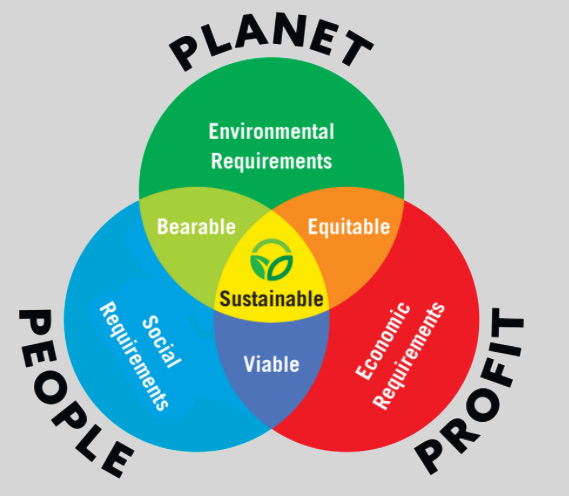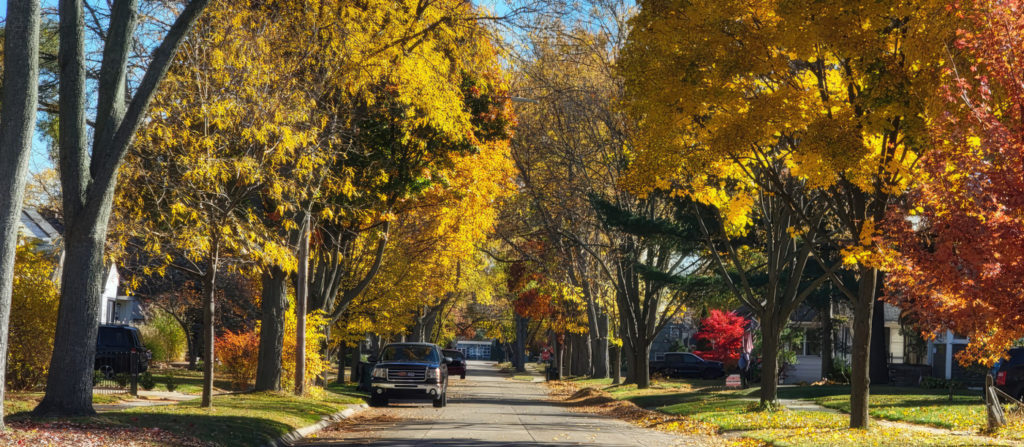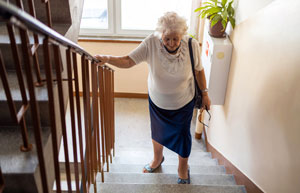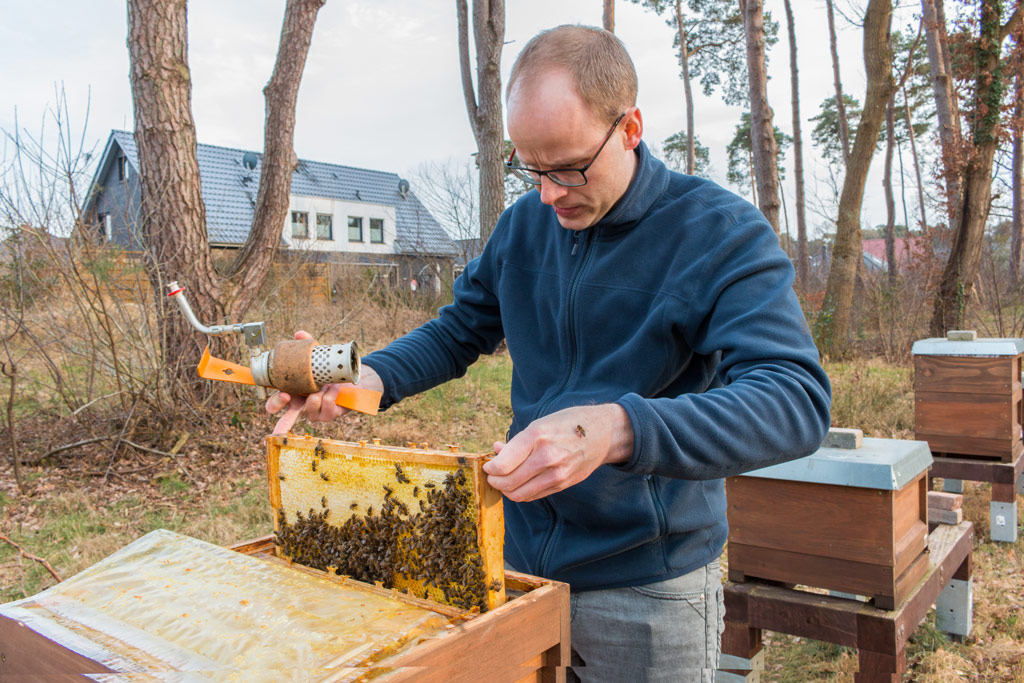
Talk About the Weather
As we plan for the future, many of the challenges we will face are related either directly or indirectly to our place in larger systems, both natural and man-made. We often have little direct local control over these systems, but adapting to change and discovering our role in contributing to the health of these systems is nonetheless essential to planning for a community that can survive and thrive even in the face of the most severe challenges.
A more frequent concern for residents of Southeast Michigan is the changing climate. Our changing climate has far-reaching implications for all of Michigan’s communities, impacting agriculture, tourism, recreation, fishing, and forestry in the Great Lakes region, thereby affecting our livelihoods, economy, and health. These changes may result in reduced food security as production and distribution are impacted, an increase in pests and resulting public health issues such as West Nile and Zika, loss or damage to property, and dangerous conditions for everyday activities. Metro areas are at a particular risk of transportation system issues. Costly infrastructure repairs may result in reallocating funds from high-need programs and services. Regardless of the event, vulnerable populations such as the young, elderly, other-abled, and low-income are likely to be most affected and have more challenging recoveries.
Communities can plan for these events and their outcomes, both to prevent and mitigate the effects (sustainability planning) as well as how to respond when they occur (resiliency planning). Both sustainability and resiliency have an important role in building healthy and vibrant communities for the future. Sustainability plans can serve as guiding documents, helping communities plan and act more sustainably through resource management and policy-making. Resiliency plans help communities, organizations, and individuals prepare for stressors such as natural disasters, pandemics, or other crises with the goal of minimizing the negative impacts of the event and facilitating recovery. These typically include a risk assessment, inventory of existing community resources, continuity planning, disaster preparedness, response and recovery planning, communication plans, and risk mitigation.

Sustainability and Resiliency
Sustainability and resiliency have become buzzwords in recent years and are often used interchangeably and in a variety of contexts. However, they are distinct concepts.
- Sustainability is the ability to meet the needs of the present without jeopardizing the ability of future generations to meet their own needs. This is often presented as having three components:
- Economic
- Social
- Environmental
- Resiliency is the capacity to absorb, adapt, and transform when a disruption happens. A disruption could take a long time to cause a problem (such as air pollution causing widespread respiratory illnesses or lack of social connectivity for seniors causing isolation and depression), or it could occur suddenly (such as a terrorist event, tornado, or pandemic). It could be short- or long-lived, with long-term impacts. It could affect a large or a small region. Resiliency requires forethought, preparation, and continuous monitoring.

Planning for Sustainability in Clawson
In 2020, Clawson’s mayor called for the creation of a Sustainability Committee to identify and promote practices and policies within the city that help to achieve a sustainable environment. The goals of the committee were to define sustainability and resiliency for the City of Clawson, set focus areas for sustainability and resiliency planning, set goals for these focus areas, and develop a framework to serve as an overall outline for a city-wide sustainability and resiliency plan.
The committee was established in 2021 by the Planning Commission and consisted of volunteers who met monthly via Zoom. Within the first year, the committee named itself Clawson, Naturally, created and conducted a survey about sustainability in the community, wrote newsletters on local and relevant sustainability topics, and hosted an Arbor Day event that included education, tree sapling handouts, and a tree scavenger hunt.
In 2022, Clawson, Naturally began working to create the Sustainability Framework. The framework works to prioritize actions to achieve sustainability and resiliency goals in Clawson over the next five to ten years. The group developed guiding principles or considerations for when they were making the framework and prioritizing actions. With these principles in mind, the group reviewed the 142 responses to the sustainability survey and identified eight key focus areas for the city. Fourteen goals emerged from the community’s responses and best practices in other communities that addressed all aspects of sustainability. Challenges and barriers related to accomplishing these goals were identified and included in the plan, along with a set of resources for partners and funding to help overcome these challenges.
The sustainability framework was finalized and adopted in early 2023, just as the city was beginning to kick off its master plan. The new master plan will include a sustainability chapter that builds off the work completed in the framework. Currently, Clawson, Naturally is reconvening to assist in creating this chapter of the master plan and to advise the city on how to improve tree protection and stormwater management throughout the city. Stay tuned for their completed master plan!
Should Your Community Have a Sustainability and Resiliency Plan?
Here are a few reasons to consider sustainability and resiliency plans for your community.
Community concerns. In Clawson, 87% of respondents agreed that climate change is happening, and more than half of respondents indicated that they will either be affected “quite a bit” or “a lot” by climate change in the next 10 years. Your community may also be concerned about current and future events and supportive of efforts to mitigate negative impacts.
Momentum. Many communities have already taken steps towards sustainability and resiliency. The success of these steps can indicate that there is social and political support throughout the community to enhance and strengthen sustainability practices and to begin to think more comprehensively about how sustainability and resiliency can create a more equitable and inclusive community.
Disruptions can occur anywhere. No community is free from risk. While the likely challenges faced differ from community to community, all can do something to reduce that probability and improve their response in ways that best fit the community.
Extreme weather events are evident in the Midwest. We are already seeing increased rainfall, flooding events, consecutive and frequent high-heat days, and extreme weather events in Southeast Michigan. Scientists predict that this trend will continue, so even if the impacts are not being strongly felt now, they may be felt soon with too little time to adapt.
There are lessons to be learned from COVID-19. The COVID-19 pandemic has given all communities a hard look at gaps in their services, infrastructure, and systems, as well as required innovation and change in many positive ways. Keeping sustainability and resiliency in mind as we find a new normal will allow projects to meet not only current needs but also prepare for future ones.
Small changes lead to big impacts. Local changes can add up to even greater impacts at the regional, state, national, and international levels. Cities have a lot of opportunity to create sustainable conditions, as they can most easily reach and include residents.
There are many positive impacts of planning. Sustainability and resiliency planning can have many positive effects on a community’s financial, social, and environmental health. In the short term, communication channels between stakeholders will be created and strengthened. This increases capacity for inclusion, collaboration, and equitable problem-solving, leading to equitable solutions to any challenge faced in the community. In the longer term, implementation of mitigation and adaptation strategies will improve overall resilience, making the community less susceptible to disruptions. These changes in perspective and increased collaboration could jumpstart more intentional planning for community resilience in other sectors, thereby increasing equity and decreasing inequality.
Giffels Webster News

2023 Planning Michigan Conference
It was great to see so many of you at the Michigan Association of Planning’s Planning Michigan Conference! For those we missed, we hope you can join us next year!
For more information, please contact Giffels Webster at 866.271.9663. www.giffelswebster.com



